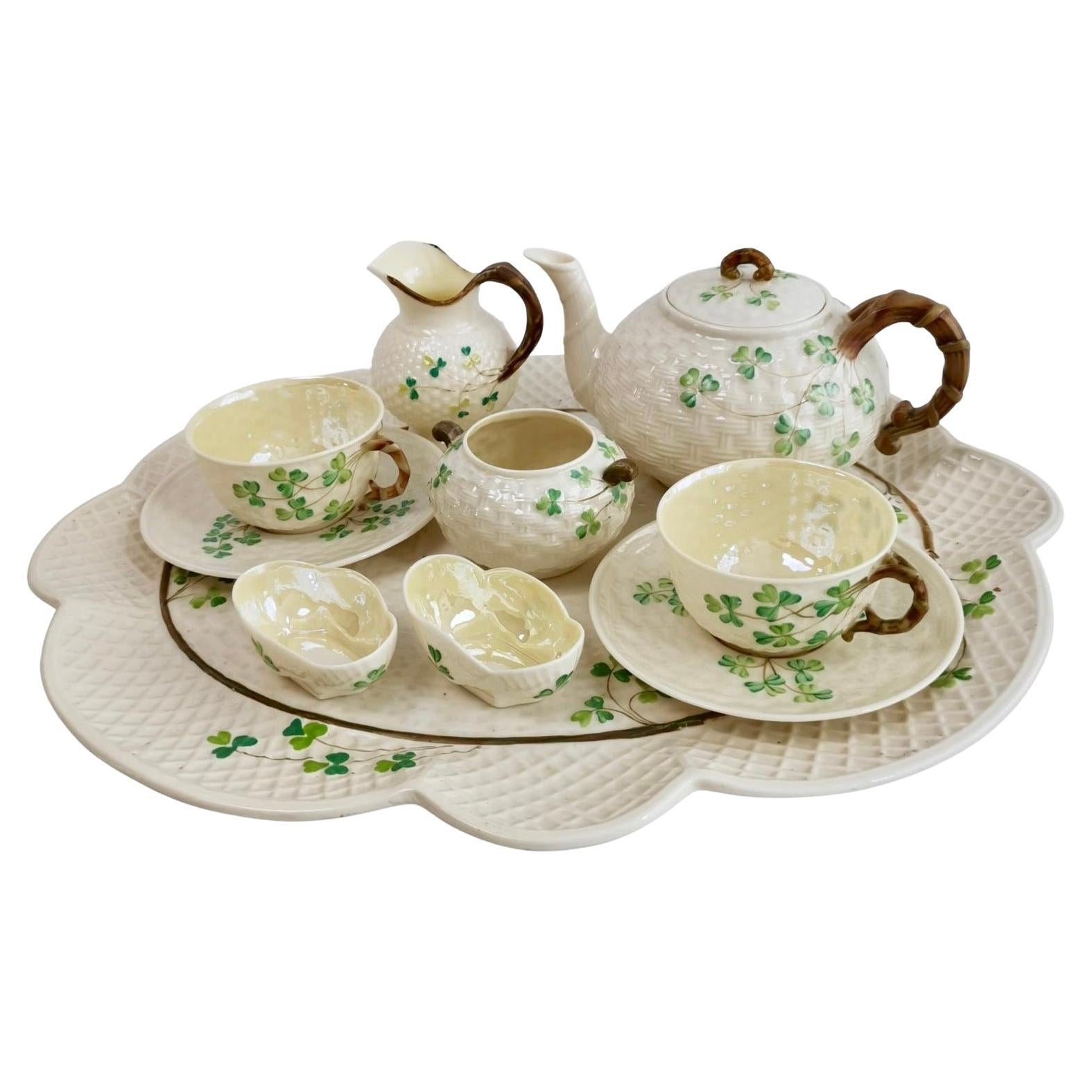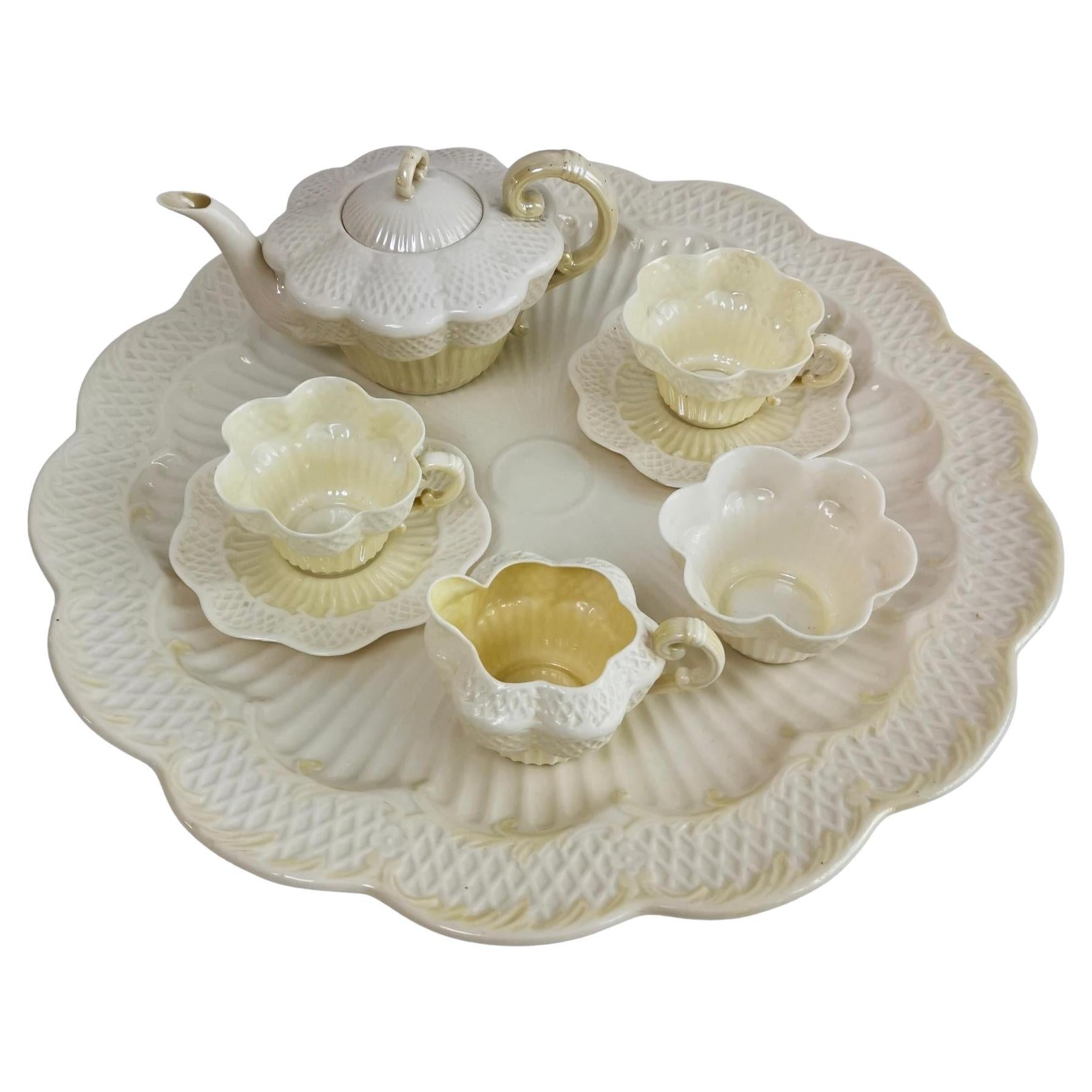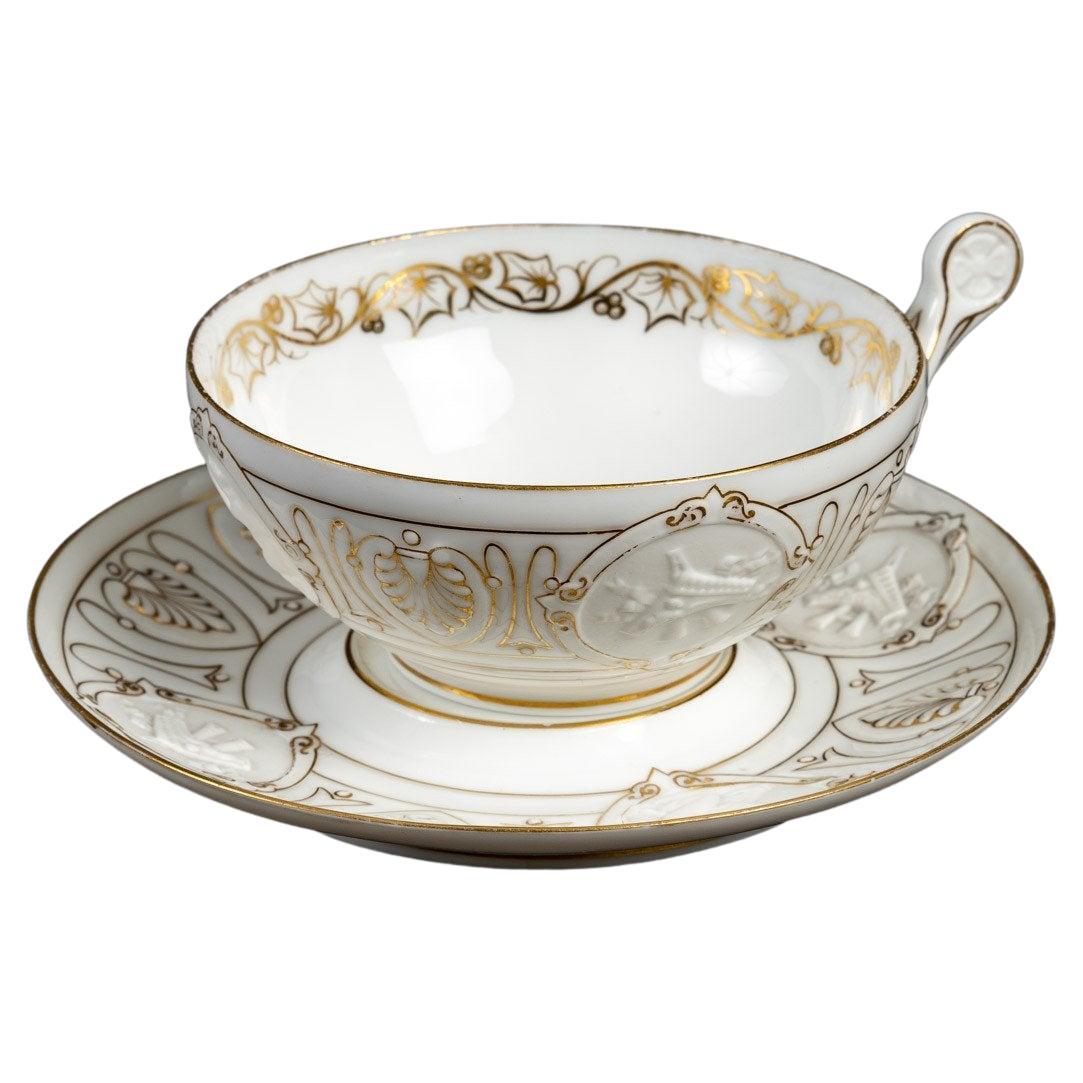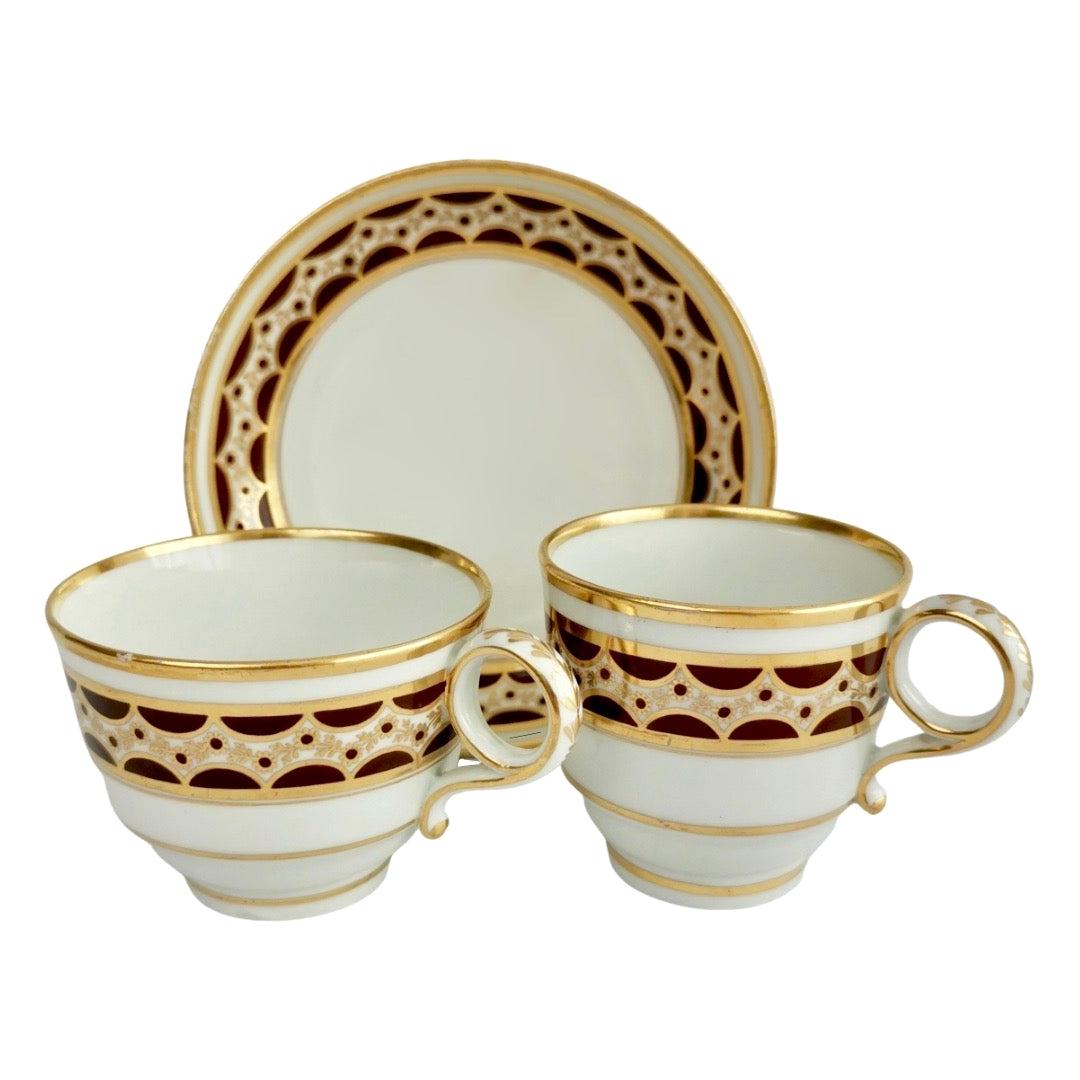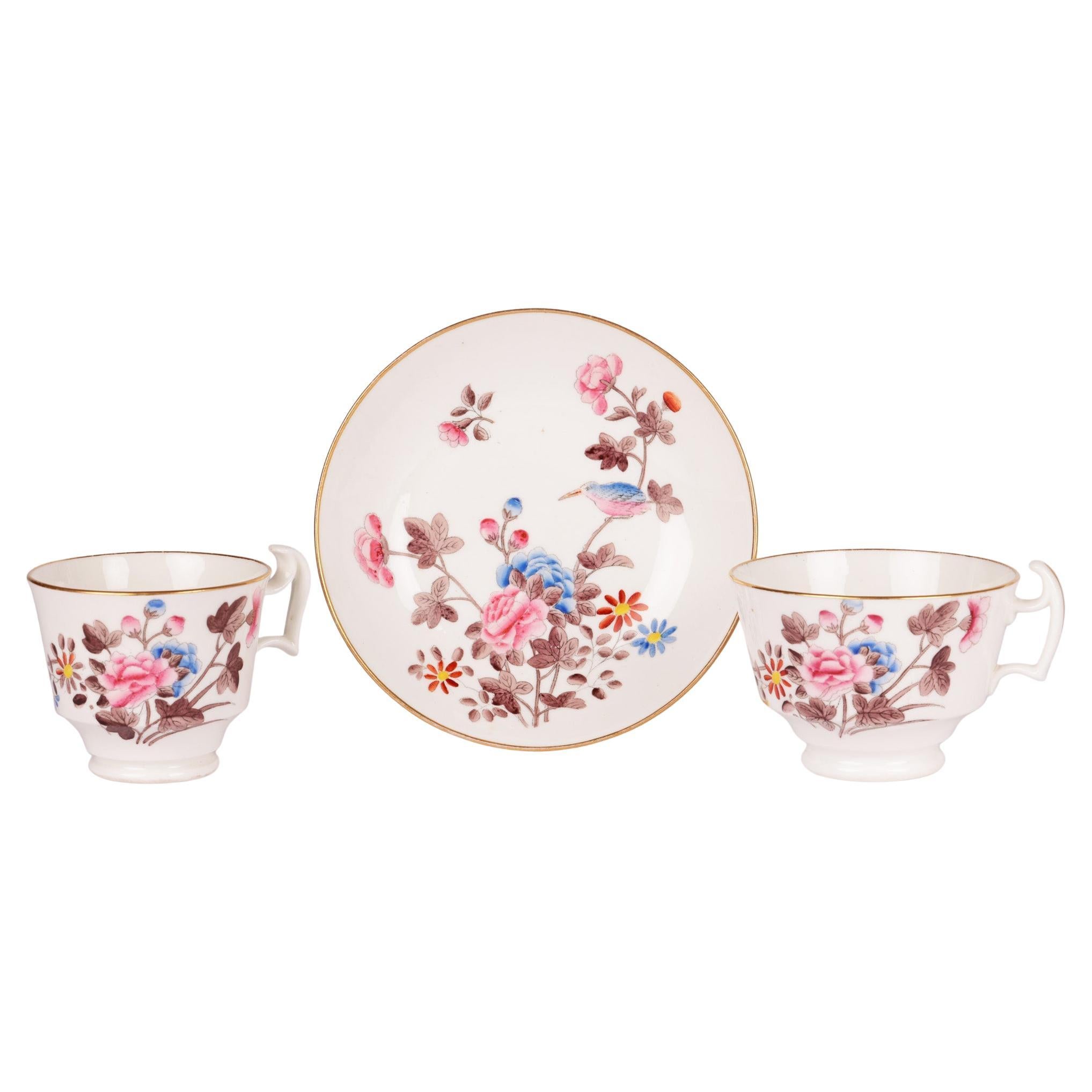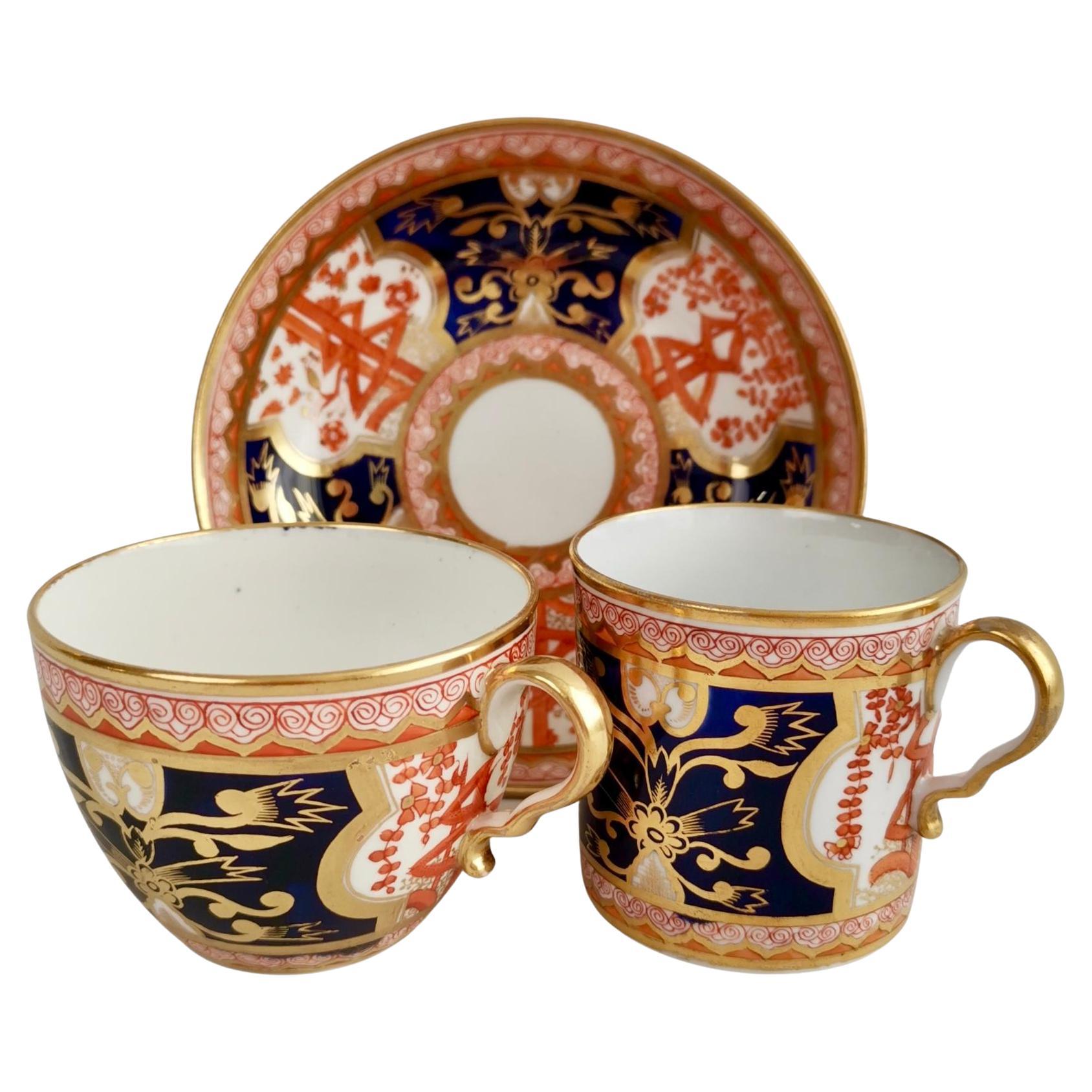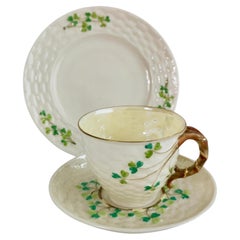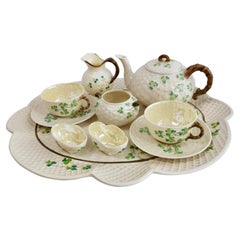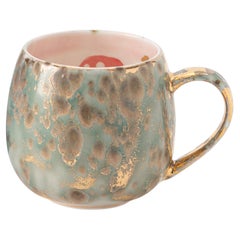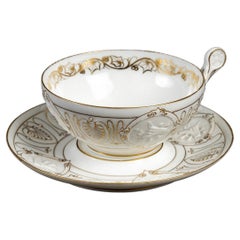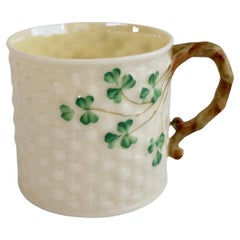
Belleek Small Porcelain Mug, Cream and Green Shamrock Pattern, 1926-1946
View Similar Items
Want more images or videos?
Request additional images or videos from the seller
1 of 12
Belleek Small Porcelain Mug, Cream and Green Shamrock Pattern, 1926-1946
About the Item
- Creator:Belleek Pottery Ltd. (Maker)
- Dimensions:Height: 2.6 in (6.61 cm)Width: 3.75 in (9.53 cm)Depth: 2.75 in (6.99 cm)
- Style:Arts and Crafts (In the Style Of)
- Materials and Techniques:
- Place of Origin:
- Period:
- Date of Manufacture:1926-1946
- Condition:Wear consistent with age and use. The set is in perfect antique condition without any damage, repairs, crazing or wear.
- Seller Location:London, GB
- Reference Number:Seller: A-BEL10h1stDibs: LU4805128780622
About the Seller
5.0
Gold Seller
These expertly vetted sellers are highly rated and consistently exceed customer expectations.
Established in 2016
1stDibs seller since 2019
208 sales on 1stDibs
Typical response time: 1 hour
More From This SellerView All
- Belleek Coffee Cup Trio, Shamrock Pattern, 1891-1926By Belleek Pottery Ltd.Located in London, GBThis is a very charming coffee cup trio made by Belleek in the Shamrock design, consisting of a coffee cup, a saucer and a little cake plate. It has the 2nd Black Mark, which was used between 1891 and 1926. Given the quality of the porcelain we think the date of production is probably closer to 1891 than 1926. If you ever thought Belleek fine china looks, sounds and feels unique, you are right. There is a back story to this extraordinarily fine Irish eggshell porcelain, which has an unusually high amount of "frit" and therefore is thinner and finer than any other china. Pottery in Belleek (in the now Northern-Irish area of Fermanagh) had started in 1849 with John Caldwell Bloomfield, who was a wealthy land owner. During the Irish famine...Category
Antique Late 19th Century Northern Irish Arts and Crafts Tea Sets
MaterialsPorcelain
- Belleek Cabaret Tea Set for Two, Shamrock Pattern, 1891-1946By Belleek Pottery Ltd.Located in London, GBThis is a rare and gorgeous Belleek cabaret tea service, or dejeuner set, in the famous Shamrock design, consisting of a teapot, two teacups and saucers, a milk jug, a sugar bowl, and a salt and pepper, all placed on a large matching tray. It is extremely rare to come across an entire cabaret set of these antique items, particularly when in such good condition, so this is a rare opportunity! If you ever thought Belleek fine china looks, sounds and feels unique, you are right. There is a back story to this extraordinarily fine Irish eggshell porcelain, which has an unusually high amount of "frit" and therefore is thinner and finer than any other china. Pottery in Belleek (in the now Northern-Irish area of Fermanagh) had started in 1849 with John Caldwell Bloomfield, who was a wealthy land owner. During the Irish famine...Category
Antique Late 19th Century Northern Irish Victorian Tea Sets
MaterialsPorcelain
- Belleek Cabaret Tea Set for Two, Cream Grass Pattern, Victorian 1863-1891By Belleek Pottery Ltd.Located in London, GBThis is a beautiful and very rare Belleek cabaret set in the Grass design, consisting of a teapot, two teacups and saucers, a milk jug and a lidded sugar bowl, all placed on a large tray. All items carry the 1st Black Mark, which was used between 1863 and 1891. It is extremely rare to come across an entire cabaret set of these antique items, particularly when in such fabulous condition, so this is a rare opportunity! If you ever thought Belleek fine china looks, sounds and feels unique, you are right. There is a back story to this extraordinarily fine Irish eggshell porcelain, which has an unusually high amount of "frit" and therefore is thinner and finer than any other china. Pottery in Belleek (in the now Northern-Irish area of Fermanagh) had started in 1849 with John Caldwell Bloomfield, who was a wealthy land owner. During the Irish famine...Category
Antique Late 19th Century Northern Irish Victorian Tea Sets
MaterialsPorcelain
- Belleek Cabaret Tea Set, Cream Cob Lustre, Erne, Victorian, 1890sBy Belleek Pottery Ltd.Located in London, GBThis is an extremely rare Belleek cabaret set for two, or "tête-à-tête", made in the Erne series brought out in the 1890s. The items carry the 2nd Black Mark, used between 1891 and 1926. The set consists of a teapot, a milk jug, a sugar bowl, two teacups and saucers, and a large matching tray. This set is very fine and with its restrained cream-white colour it would make a wonderful wedding gift! If you ever thought Belleek fine china looks, sounds and feels unique, you are right. There is a back story to this extraordinarily fine Irish eggshell porcelain, which has an unusually high amount of "frit" and therefore is thinner and finer than any other china. Pottery in Belleek (in the now Northern-Irish area of Fermanagh) had started in 1849 with John Caldwell Bloomfield, who was a wealthy land owner. During the Irish famine he realised that unless he would find a way for his tenants to make a profit off the land, they would starve. Agriculture had become impossible due to the agricultural diseases. This caused millions to starve and more millions to leave. As an amateur mineralogist, John Caldwell Bloomfield realised that his land had exactly the right mineral deposits to be used as clay for porcelain. He involved several investors and scientists and after many years of research, trial, error, the building of a railway line to import coal from England, and building a factory, the Belleek pottery resulted, employing the local people and soon producing the finest china made with clay from the Belleek area. What had started as a way to fend off famine among the local tenants had became a story of incredible success by the 1880s as Queen Victoria fell in love with the fine white china and the many homely, slightly bizarre but nature-loving designs; this was different from English tradition, yet it was very much to the taste of the British who had developed a real love for home-made fine china since it was introduced in the late 18th Century. Belleek not only brought out many tea services, but started a new tradition of intricately woven porcelain baskets. Soon the English nobility started to place big orders and the pottery is still flourishing today and selling its wares the world over, while in England most potteries have long disappeared. Belleek made many cabaret services, often called breakfast services or "tête-à-tête" services; these were used to carry breakfast tea up to the bedroom. Queen Victoria bought one in the Echinus style during a visit to the factory in the 1860s, and ever since Belleek's cabaret services have been in great demand. Nowadays there are very few of these left and it is rare to find a full service like this. The Erne series was named after the river right besides the Belleek factory. This river forms the border between the Republic of Ireland and Northern Ireland, with the factory on the Northern Irish end of the bridge at Belleek. The pattern seems to be a play on the baskets and nets of the fishermen who once fished the abundant trout and salmon on the river Erne and the lake that belongs to it. The items carry the second Black Mark, which was used between 1891 and 1926, however the very fine quality of the porcelain indicates that most pieces of the set are more likely to be from the 1890s than from the 20th Century. You will see that the shade of cob lustre is different on each item; this is normal for Belleek tea sets...Category
Antique Late 19th Century Northern Irish Victorian Tea Sets
MaterialsPorcelain
$3,540 Sale Price20% OffFree Shipping - Flight & Barr Porcelain Teacup Trio, Brown and Gilt Pattern, Georgian, 1792-1804By Flight & Barr WorcesterLocated in London, GBThis is a beautiful "true trio" consisting of a teacup, a coffee cup and a saucer, made by Flight & Barr between 1792 and 1804. The items are decorated with a sohpisticated abstract-looking pattern of brown and gilt daisies playfully trailing between brown half circles set in a gilt band. In the late 18th and early 19th century cups and saucers...Category
Antique 1790s English George III Tea Sets
MaterialsPorcelain
$320 Sale Price / set20% OffFree Shipping - Spode Porcelain Teacup Trio, Red Imari Dollar Pattern, Regency, ca 1810By SpodeLocated in London, GBThis is a beautiful orphaned teacup made by Spode in about 1810. It bears a beautiful Japanese-inspired Imari pattern. Spode was the great pioneer among the Georgian potters in England. Around the year 1800 he perfected the bone china recipe that has been used by British potters ever since, and he was also the leading potter behind the technique of transferware, making it possible for English potters to replace the Chinese export china, which had come to an end around that time, with their own designs. This was fundamental to a thriving industry that would last for about 150 years and provide half the world with their tableware. Spode porcelain is regarded as one of the highest quality porcelains around; for a soft-paste porcelain it is surprisingly hard and fine, and has a wonderful bright white colour. The pattern on this can is called "Dollar" pattern, a very famous pattern that was used by English potters in the 18th and early 19th Century. It is obvious why it is called “dollar” - but its origin is less obvious! It is thought that this pattern was derived from a very old Chinese pattern depicting a tree with elaborate foliage that hides a Chinese character representing longevity or happiness. Traditionally, this went with a an image called “Taotie”, which was used on very ancient bronze vases...Category
Antique Early 1800s English Regency Porcelain
MaterialsPorcelain
$420 Sale Price / set20% OffFree Shipping
You May Also Like
- Contemporary Set of 2 Chubby Mugs Hand Painted Porcelain Green Pink GoldBy Coralla MaiuriLocated in Roma, RM“I have been creating artworks and installations for a long time. Then over the past several years, pottery has absorbed most of my expressive energy. I follow an empirical, yet intu...Category
2010s Italian Porcelain
MaterialsPorcelain
- Beautiful Limoges Porcelain Mug by Jean PouyatBy Jean PouyatLocated in Saint-Ouen, FR"Beautiful Limoges Porcelain mug by Jean Pouyat" Beautiful Limoges porcelain cup, by Jean Pouyat, Napoleon III period, XIXth Century Measures: D: 1...Category
Antique 19th Century French Napoleon III Porcelain
MaterialsPorcelain
- Set of 6 Vintage Mugs with Colourful Circle Pattern, 1970sLocated in Praha, CZSet of six colourful mugs with circle pattern. Glazed ceramic mugs made in Poland by Lubiana in the 1970s.Category
Mid-20th Century Polish Mid-Century Modern Porcelain
MaterialsPorcelain
- Swansea Welsh Porcelain Kingfisher Pattern Cabinet TrioBy Swansea PorcelainLocated in Bishop's Stortford, HertfordshireA fine antique Welsh porcelain cabinet trio decorated in the Kingfisher pattern by sought after maker Swansea and dating from around 1820. The trio comprises of a teacup, a coffee cu...Category
Antique 1820s Welsh George III Tea Sets
MaterialsPorcelain
- Antique Irish Belleek Porcelain Trumpet Centerpiece Vase Urn 1926-1946 IrelandBy Belleek Pottery Ltd.Located in Dublin, IrelandAn Exceptionally Fine Quality Irish Belleek Porcelain Pleated and Flared Trumpet formed Centerpiece of museum quality. Third black mark for 1926 to 1946 The main flaired body above...Category
Early 20th Century Irish Victorian Vases
MaterialsPorcelain, Pottery
- KPM, Berlin, Royal Ivory Tea Service in Cream-Colored PorcelainLocated in Copenhagen, DKKPM, Berlin. Royal Ivory tea service in cream-colored porcelain with gold decoration for six people. 1920s. Consisting of six teacups with saucers, six ...Category
Vintage 1920s German Porcelain
MaterialsPorcelain
Recently Viewed
View AllMore Ways To Browse
Arts Crafts Wicker
Arts And Crafts Wicker
Chinese Tea Set Green
Irish Stained Glass
Antique Porcelain Mugs
Chinese Silver Mug
White Wicker Basket
Antique Irish Pottery
John Caldwell
Antique China Mugs
Porcelain Weave Basket
Antique Chinese Mug
Black Antique Wicker
Irish Shamrock
Shell I Love You
Antique Irish Landscape
Fire Wood Basket
Antique Wicker Baskets With Handles

